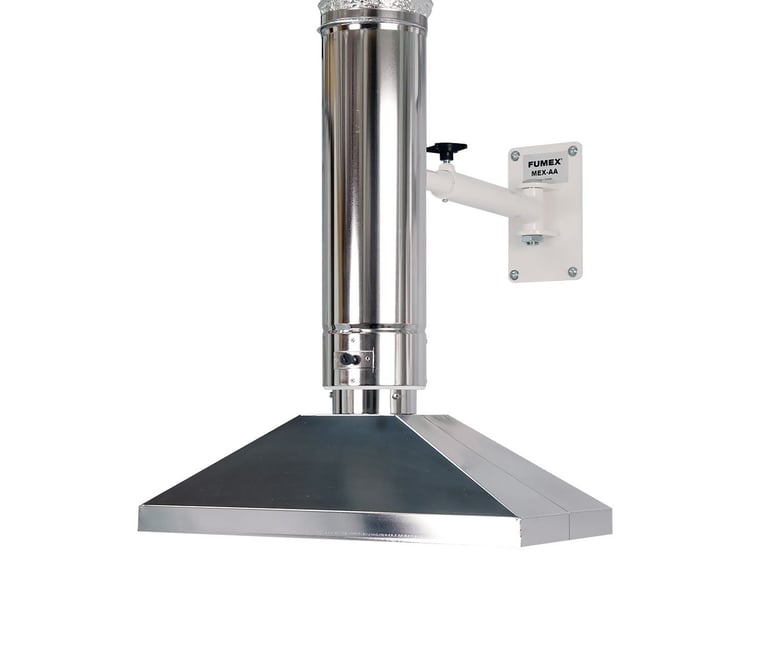Canopy Hoods
The canopy hood is an essential piece of equipment in laboratories, providing a safe and controlled environment for various experiments and processes. The hood functions by containing and extracting harmful fumes, vapors, and particles, ensuring the well-being of laboratory personnel and maintaining the integrity of the experiments. With its adjustable sash and efficient airflow system, the canopy hood offers flexibility and reliability in controlling the laboratory atmosphere. Its durable construction and easy maintenance make it a valuable asset in any laboratory setting, allowing for a clean and secure workspace. Whether handling hazardous chemicals or conducting sensitive experiments, the canopy hood is an indispensable tool for maintaining a safe and productive laboratory environment.


Canopy Hoods for lab applications
Laboratory Canopy Hoods: Essential Safety Equipment for Modern Labs
What is a Laboratory Canopy Hood?
A laboratory canopy hood is a ventilation device designed to capture, contain, and exhaust fumes, vapors, and particles generated during laboratory procedures. Unlike enclosed fume hoods, canopy hoods are suspended above work areas and rely on thermal air currents to draw contaminants upward into the ventilation system.
Types of Laboratory Canopy Hoods
Standard Canopy Hoods
Standard canopy hoods feature a simple hood structure suspended above the work area. These are typically used for thermal processes where heat naturally creates rising air currents.
Extraction Canopy Hoods
Extraction canopy hoods incorporate more powerful fans to actively draw air upward, providing enhanced capture capabilities for applications where thermal currents alone may be insufficient.
Specialized Canopy Hoods
Heat-resistant models: Designed for high-temperature applications
Corrosion-resistant models: Constructed with materials that withstand exposure to caustic chemicals
Custom configurations: Tailored to specific laboratory layouts and requirements
Key Applications
Canopy hoods are particularly useful for:
- Thermal equipment: Ovens, furnaces, hot plates, and other heat-generating devices
- Non-hazardous steam processes: Autoclaves and sterilization equipment
- Specialized laboratory equipment: Atomic absorption spectrophotometers and similar instruments
- Large equipment setups: When standard fume hoods cannot accommodate the size of apparatus
Advantages of Laboratory Canopy Hoods
- Space efficiency: Allow more open workspace beneath while still providing ventilation
- Equipment compatibility: Accommodate larger instruments and apparatus
- Cost-effectiveness: Generally less expensive than full enclosure fume hoods
- Flexibility: Can be installed in various laboratory settings with minimal structural modifications
- Energy efficiency: When properly designed, can use less energy than traditional fume hoods
Limitations and Considerations
- Limited containment: Less effective than enclosed fume hoods for highly hazardous materials
- Draft sensitivity: Performance can be affected by room air currents
- Positioning requirements: Must be properly located relative to work areas
- Not suitable for all applications: Should not be used for highly toxic or volatile substances
Installation and Safety Standards
- Laboratory canopy hoods must comply with several important standards:
- ASHRAE 110 guidelines for laboratory ventilation
- ANSI/AIHA Z9.5 standards for laboratory ventilation
- NFPA 45 requirements for laboratory safety
- OSHA workplace safety regulations
Maintenance and Testing
Regular maintenance ensures optimal performance and safety:
Quarterly inspection of ductwork and connections
Semi-annual airflow testing and certification
Annual electrical system checks
Periodic cleaning to prevent buildup of contaminants
Choosing the Right Canopy Hood
When selecting a laboratory canopy hood, consider:
- Application requirements: Type of processes and materials used
- Size and configuration: Dimensions of the work area and equipment
- Airflow capacity: Sufficient for the intended application
- Construction materials: Compatible with laboratory environment
- Energy efficiency: Operating costs over the hood's lifetime
Modern Innovations
Recent advancements in canopy hood technology include:
- Variable air volume (VAV) systems that adjust airflow based on need
- Energy recovery systems to reduce HVAC costs
- Smart monitoring systems that alert users to airflow issues
- Improved ergonomic designs for better usability
Conclusion
Laboratory canopy hoods provide essential ventilation for specific laboratory applications, particularly those involving heat-generating equipment. While not suitable for all laboratory processes, they offer an efficient and cost-effective solution for many ventilation needs when properly selected, installed, and maintained.
